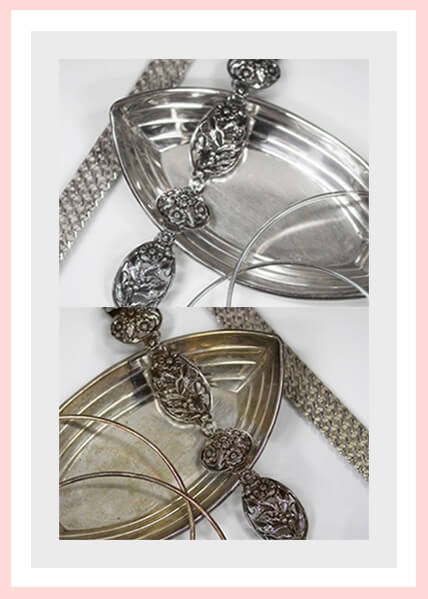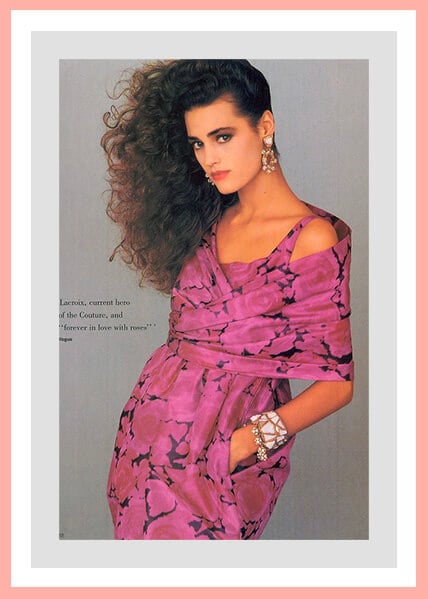Your Cart is Empty
BLACK FRIDAY SALE - UP TO 50% OFF SITEWIDE
BLACK FRIDAY SALE - UP TO 50% OFF SITEWIDE
test
A column with no settings can be used as a spacer
Link to your collections, sales and even external links
Add up to five columns
A column with no settings can be used as a spacer
Link to your collections, sales and even external links
Add up to five columns
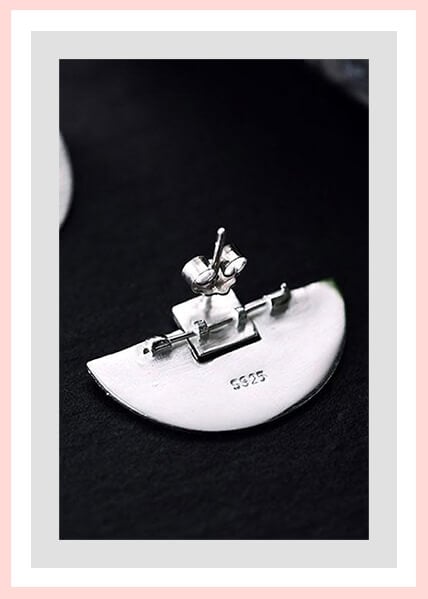
What Is 925 Sterling Silver? | "925" Meaning On Jewelry
 Rehana Jewelry Metals
Rehana Jewelry Metals
April 8th, 2021 10 minute read
Listen to article
Audio generated by DropInBlog's Blog Voice AI™ may have slight pronunciation nuances. Learn more
You might have wondered about the meaning of this number in your favorite ring or necklace. Well, it refers to the use of 925 sterling silver in that particular jewelry piece. Jewelry pieces always have markings, except for the cheap knockoff types, which have their own unique meaning in jewelry jargon. The number "925" is one of the common jewelry stamps identification. Now, you might be thinking about what sterling silver is and its connection with this specific number. The answers will take you a deep dive into the fascinating history of this precious metal.
Table of Contents
WHAT IS 925 STERLING SILVER?
925 sterling silver is an alloy that contains 92.5% silver and the remaining 7.5% is a stronger metal to add strength to the delicate metal. The additional metals used in jewelry could be copper, zinc or nickel.
Most silversmiths prefer using copper because of its non-reactive property to sensitive skin. However, some makers go with nickel and zinc, which do not impact the quality of silver in any way.
Pure silver is composed of 99.9% of silver and a tiny percentage of metallic components, such as copper. But making jewelry with this metal is impossible because it's too soft to hold its shape. It needs blending with one or two more metal components to become harder but still pliable enough to shape into various designs.
The difference between silver and sterling silver is in the percentage of other metals. The latter, while displaying the white shine of the precious metal, is easy to work on for jewelers.
Most countries in the world have strict guidelines and standards regarding the ratio of silver and other metals in 925 sterling silver, and 92.5:7.5 is the most common. Some countries may use different ratios; for example, France uses 95% silver and 5% other metals in 925 Silver.
THE HISTORY OF JEWELRY STAMPING
Stamping on jewelry is not a new concept at all. It has been a tradition since ancient times to ensure the purity of valuable metals.
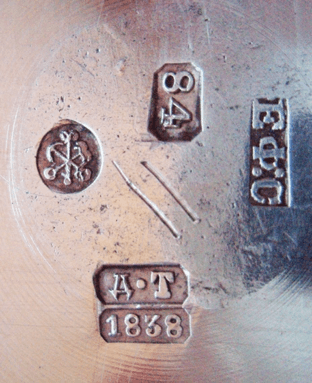
Typical 19th Century Russian Hallmarks. St. Petersburg, 1838.
Image Courtesy of the Hallmark Research Institute

Portuguese Hallmark with Deer and .800 Gold Fineness. This Mark has been Stamped at the Porto Assay Office Since 1985. Image Courtesy of the Hallmark Research Institute
Types Of Hallmarks
According to the Lang Antiques, to understand the slightly complicated jewelry stamping system, you need to know the common hallmark types jewelers use as standards:
- Purity Marks
- Maker’s Marks
- Date Letters
- Town Marks
These stamps are codes for various information regarding the style and manufacturing technique of a particular piece.
a. Purity Marks
A purity mark in a silver jewelry piece indicates the percentage of silver in it. Before 1870, the USA used the hallmark "coin silver" (90% silver) for standard silver pieces. The use of the stamp "sterling" (92.5% silver) started after 1870.
In modern times, the purity marks for 925 sterling silver jewelry are “925,” “STERLING,” “STG,” or “STER.” For gold-plated sterling silver, some jewelers use the word " Vermeil.”
b. Maker’s Marks
As the name suggests, these hallmarks refer to the maker of the jewelry. It could be a trademark, logo, a special designer signature, or the company name of the manufacturer.
A company may use one or all of these stamps to label its products. For example, celebrated luxury jewelry brand Tiffany & Co has used “Tiffany & Co.”, “T & Co.”, and separate hallmarks for the work by prominent jewelry designers.
Some brands use unique serial numbers for every piece of jewelry they make to prevent forgery. Also, all companies must follow the jewelry stamping guidelines set by their respective countries.
c. Date Letters
Until 1999, the date letter hallmark was a requirement for all gold and silver jewelry made in the United Kingdom. The purpose of the hallmark letters was to refer to the assay master who was in the charge of stamping.
The date letter these days refers to the timing of assaying. However, modern jewelers hardly exercise this practice.
d. Town Marks
Like the date letters, this stamping type is a story of the past. In the late middle ages, some countries introduced this hallmarking system. It contains the stamp of the region or town where the jewelry piece is manufactured.
For example, Birmingham's stamp is an anchor while a crown indicates that the piece comes from Sheffield.
Hallmarking Traditions in Countries
Europe: Hallmarking jewelry pieces in Europe originated from the ideal of protecting the consumers from buying fake pieces. Frauds used silver colored inexpensive metal and sell it to gullible people.
The United Kingdom: The British had a very organized system of stamping precious metals. There were assay offices in different towns and they determined the purity of a piece by putting a date mark and their own stamp. The system has been improved over time but the marking system is still in place.
WHAT DOES THE 925 STAMPING MEAN ON JEWELRY?
As I've discussed earlier, the number "925" has distinct meaning when stamped on a piece of jewelry. You would be surprised to know that the same marking is used on gold jewelry too. What does this term mean in different jewelry types?
925 Stamp on Silver
This hallmark on silver jewelry simply means that the items are made of 925 sterling silver. Depending on the manufacturing country, the ratio of silver and other metals could differ a bit.
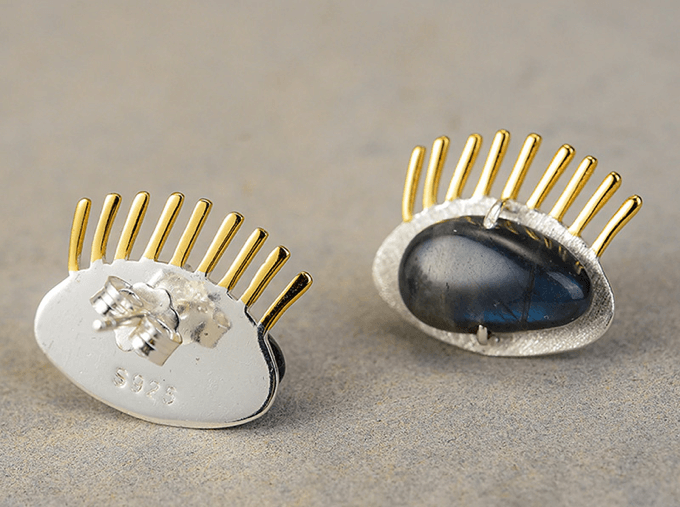
925 Stamp on high quality 925 Sterling Silver My Eyes Labradorite Earrings from Vinty Jewelry
925 Stamp on Gold
The same hallmark can be on gold jewelry too. Most consumers assume that the stamp indicates the jewelry piece containing 925/1000 gold, or 92.5% gold. This is not true.
The number does not have a correlation to the standard gold purity. In fact, it would have been 22 karats if the percentage was 91.7%.
The truth is that a 925 gold jewelry does not have solid gold in it. It's actually gold vermeil, denoting a gold-plated silver jewelry piece. So, the marking "925", in this case, means that the core metal is sterling silver.
Gold vermeil jewelry pieces also have their own standards to be considered authentic. For example, the core material needs to be 925 silver and the gold plating has to be 10 carats with a minimum of 2.5 microns of thickness.
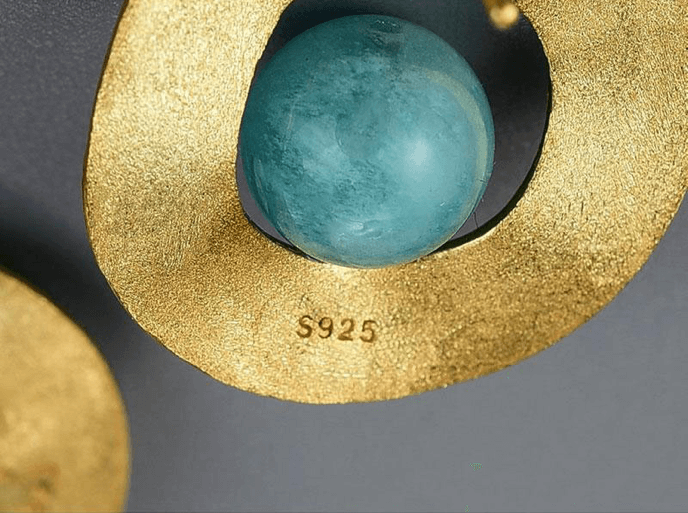
925 Stamp on Gold-plated Sterling Silver Earrings from Vinty Jewelry
CAN STERLING SILVER HAS OTHER MARKINGS?
Yes, a 925 sterling silver jewelry piece may not have the "925" marking. Instead, the stamping could read "STER", "SS", or "STG". These hallmarks on silver plated jewelry pieces denote that these are made of sterling silver.
In countries that have poor regulations on the jewelry market, dishonest manufacturers may use the term "Sterling" and its variations to dupe the customers. The core silver in these pieces is mostly of lower purity.
For example, jewelry from some countries may mark their silver products as "European Silver" or "Coin Silver", which are lower quality than 925 silver.
Some jewelry makers don't stamp their silver products at all in countries where there are no strict regulations. As a result, untrained people cannot assess the quality of these products.
You should never purchase such ornaments as there is no way to know the purity of the metals used there.
WHAT DO OTHER MARKINGS ON SILVER JEWELRY MEAN?
Countries may have their individual stamps for marking silver jewelry but international trades mostly require marking with numbers. For example, "925" is the international standard for branding sterling silver ornaments. It also verifies the purity of the precious metal.
Here are some hallmarks that indicate various ratios of silver used in silver jewelry:
- 999: Fine silver or 99.9% pure silver
- 900: 90% silver and 10% alloy
- 800: 800% silver and 20% alloy
Besides these hallmarks, you will hear about nickel silver and many of its variants, including German silver, alpaca, Argentan, paktong, new silver, and a few more names.
Nickel silver contains absolutely zero percent of silver. The metals that go into its making are 60% copper, 20% nickel, and 20% zinc. Due to its silvery appearance, nickel silver ornaments may look like silver to the amateur eye.
HOW TO AVOID PURCHASING FAKE 925 STERLING SILVER
Fraudulent practices by dishonest jewelers and retailers are not uncommon in the jewelry industry.
Sellers can dupe naive consumers because of the latter's lack of knowledge about identifying real 925 sterling silver. If you love wearing silver jewelry, you need to know how to spot the fake ones.
Luckily, it does not require mastering any technical knowledge to find the warning signs in fake silver jewelry.
The first step is to avoid buying unstamped jewelry because ornaments without any marking are most likely not real silver at all. In fact, Their core is a cheap metal with a thin coating of sterling silver.
Cheap and fake sterling silver will wear off over time and may cause skin irritation or other allergic reactions. Follow these tips to avoid shopping for counterfeit silver products:
1. Look for the stamp on the jewelry.
Real sterling silver pieces will always have any of the approved markings. The standard silver percentage in 925 sterling silver is 92.5%. However, it could be lower than that threshold in some countries. For example, it can be only 70% in Lebanon.
Unless you have bought the piece from a USA or UK retailer, you should check for more warning signs other than just the marking.
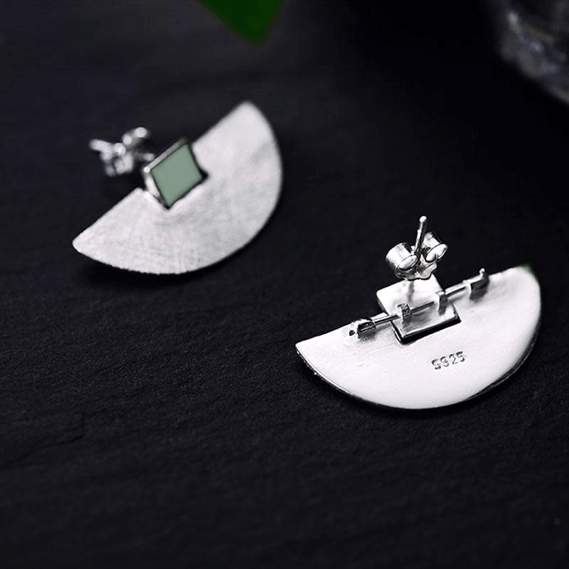
925 jewelry stamp on Sterling Silver Geometric Drop Earrings from Vinty Jewelry.
2. Avoid the ones with a smell.
Real 925 silver does not have any smell. So, only too much copper in it can produce a distinct odor. Just sniff the piece and if it smells fine, move to the next steps.
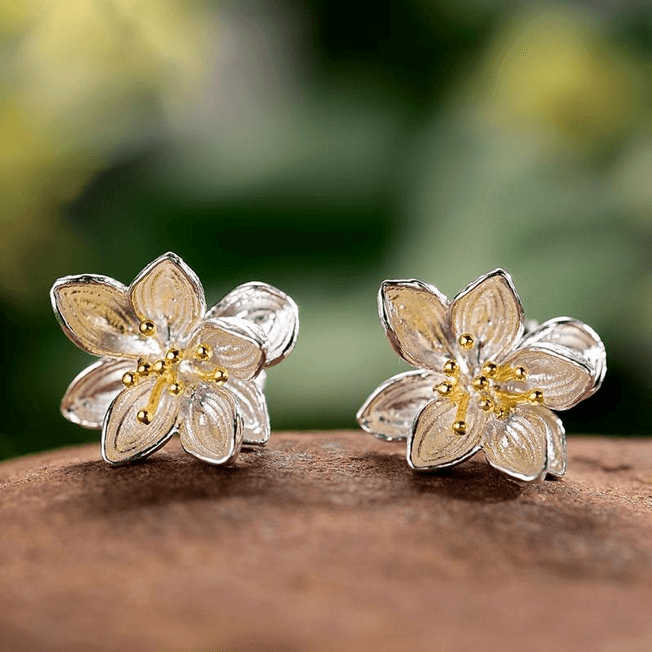
925 Sterling Silver Tiny Water Lily Stud Earrings from Vinty Jewelry.
3. Test with a magnet.
Magnets don't attract silver. So, magnets having an effect on the jewelry piece means it has a high percentage of nickel, cobalt, or iron.

Sterling silver is not magnetic.
4. Rub with a white cloth.
If the rubbing produces black marks on the cloth, the silver is genuine. It happens because silver reacts with light and oxygen in the air. The black residue is the aftereffect of that chemical reaction.
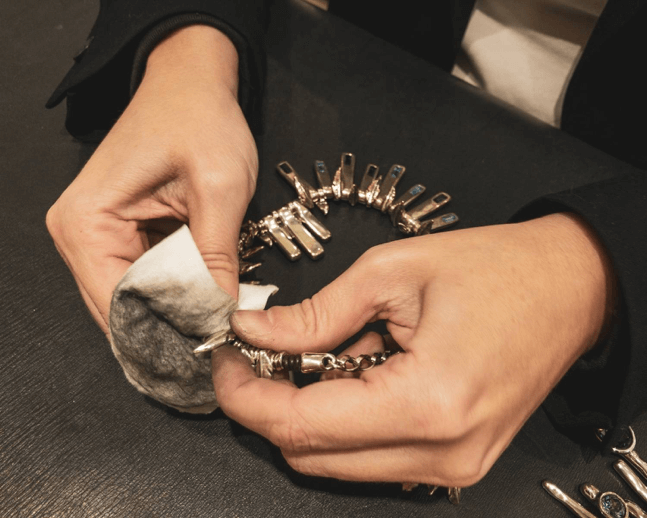
Click here to see further ways to see how to test silver.
925 sterling silver jewelry is not cheap. So, while buying sterling silver jewelry, you should apply each of these tricks to stop wasting money on something fake. Whether you are buying a sterling silver pendant or ring, shop from a reputed jeweler to avoid buying counterfeits.
Discover our collection of nickel-free jewelry in 925 sterling silver.
SELLING FAST

Sterling Silver Frog Ring from Vinty Jewelry
Click here to see our collection of sterling silver rings.
Related Articles
What Does Gold Plated Jewelry Mean | Everything You Need
16 minute read
April 11th, 2021
Cleaning Sterling Silver: Low-Cost Homemade Solutions
10 minute read
June 7th, 2021
80s Fashion – What Did People Wear to Feel Stylish?
16 minute read
May 15th, 2021


